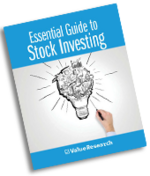Is there a concept related to doing an SIP based on Nifty PE? If yes, then how to learn about this?
- Rajan
There are other funds which are following this methodology whereby depending on the price-to-book value or price-to-earnings ratio, they are trying to follow an asset allocation, i.e. when the market PE is very high, they invest more in fixed income and less in equity and vice versa. It is fairly a very dynamic approach. Here the asset allocation is not decided by the fund manager's thinking or his/her outlook for the market - be it for equity or fixed income.
These funds have turned out to be good examples of being able to generate superior risk-adjusted returns. But this strategy dramatically failed in one particular instance of the FT India Dynamic PE Ratio Fund of Funds (currently known as Franklin India Dynamic Asset Allocation Fund of Funds after undergoing changes in the scheme features). During the period between 2004 and 2007, the fund remained out of fixed income for this prolonged period simply because the market was at a high and the earnings of the companies in its portfolio were also growing. So, if we are faced with a rising earning scenario in future, that is when these funds tend to actually miss out. In such situations, the market looks very expensive and it remains expensive for a couple of years because the company's earnings are also rising and the market discounts the future earnings, thereby making them expensive.
So, I would say that don't over-engineer your investments. Your own asset allocation and periodic rebalancing will help you attain better results. The PE strategy would turn out to be a conservative strategy and in the above scenario, though you would not have lost money, you would have actually missed a good part of a great bull run when the market went up from about 3,000 points to about 20,000 points in a span of four years and that would have been a missed opportunity.
There will be a phase of the market where the markets will have expensive PEs and would tend to justify those high earnings and during other times, the markets will also correct and come down, possibly quite dramatically. So, do your asset allocation and rebalancing to tackle these ups and downs of the market as it tends to create its own bubbles and then course-correct.









